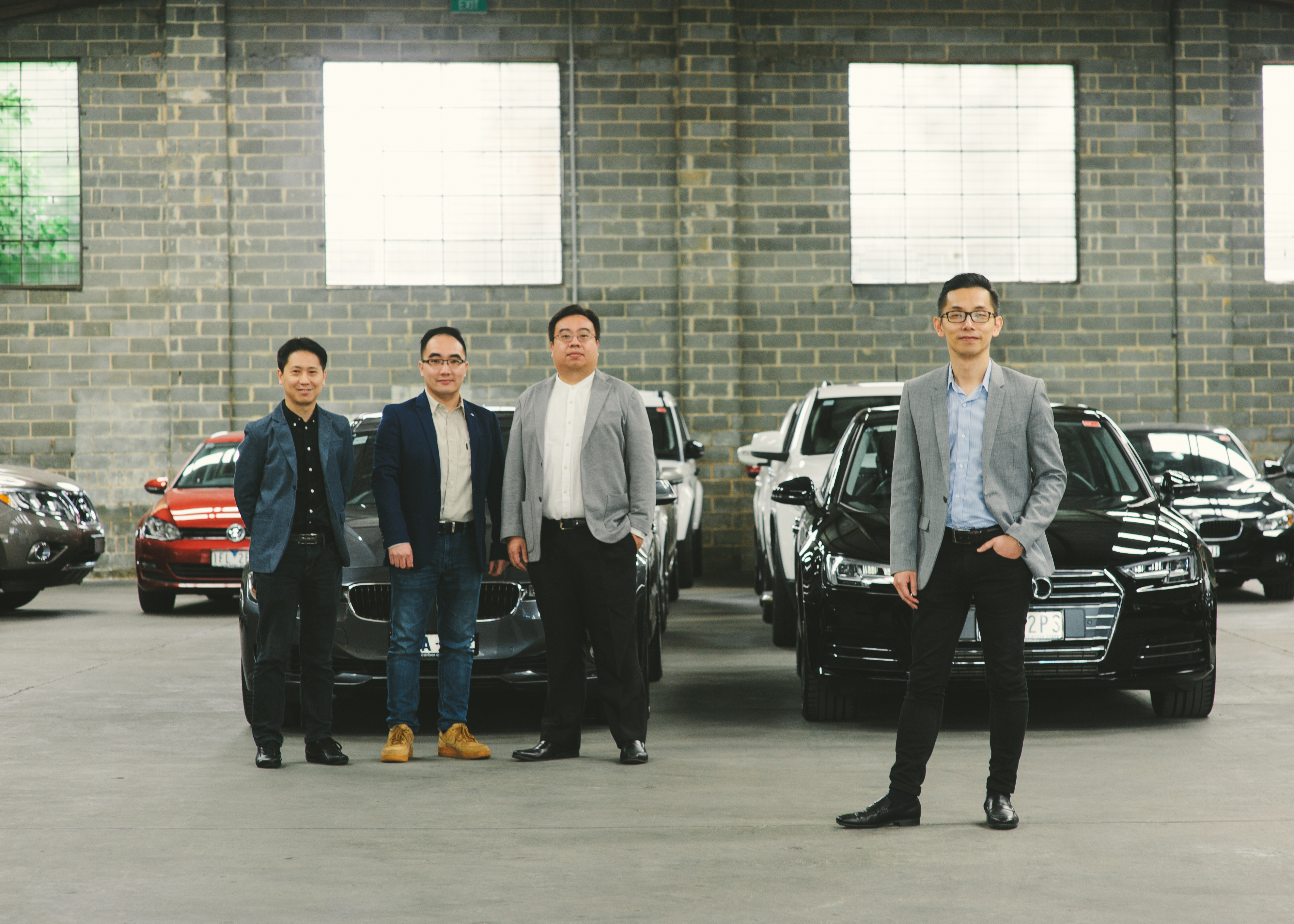Carbar CEO Des Hang (right) with his co-founders Davie Saw, Kenneth Teh and Richard Chen. Source: supplied
-
The Melbourne startup has introduced monthly subscription car hire to Australia
- It’s just launched in Sydney and will use the cash injection to roll out nationally in 2020
-
IAG is hoping to gain a better understanding of consumer vehicle habits from the data Carbar collects
The country’s biggest insurer, IAG, has taken a majority stake in digital car subscription and trading startup Carbar as part of a $16.8 million raise by the three-year-old venture.
The deal follows a $5.75 million debt and equity raise less than 12 months ago as the business rolls out its monthly subscription hire model, having launched in Sydney last month after starting out in Melbourne in 2016.
The $16.8 million came from IAG and other private investors with the insurer not disclosing its total stake.
Subscribers can hire cars from Carbar from $109 a week, including insurance, registration, roadside assistance and maintenance, without fixed term contracts and hand the vehicle back with a fortnight’s notice. The vehicles can be up to a decade old – a 2009 Toyota Landcruiser Prado is available for $219 a week, a 2018 version for $469 – and Carbar offers two subscription levels. Cruise has no minimum term, Shift lets users swap the car for free every three months. The business also has Caltex as a commercial partner
IAG is hoping to develop greater understanding of changing mobility trends from its investment, as well as offering additional value to its customers.
Carbar co-founder and CEO Des Hang said the cash injection will be used to expand the subscription service Australia-wide, as well as building the company’s online car trading platform for buying and selling new and second-hand cars.
“After successfully launching in Sydney last month, we’re now looking to roll out nationally next year and expand our car subscription offering around Australia. We’re still in the process of deciding which state will we expand to next,” he said.
The startup has also made a strategic pivot to refocus on B2B, offering cars as tools of trade or employee benefit.
Hang says the biggest challenge Carbar has faced in challenging the country’s natural predilection for car ownership.
“We know this will take time, and we know the benefits for consumers are there. But we’ve been incredibly heartened by the uptake of our offering to date. To this point: We’ve had people reach out from interstate and ask if they can pilot our service when it arrives,” he said.
Hang added that IAG’s involvement will bring operational synergies such as marketing and technology support and distribution opportunities to the venture.
IAG Executive General Manager of Innovation James Orchard said Carbar will play a central role in the changing mobility needs of its customers.
“Carbar has pioneered the car subscription model in Australia. We look forward to combining its world-class digital capabilities with IAG’s assets and scale to provide new mobility experiences for customers today and in the future,” he said.
Hang believes the auto industry in Australia is at an inflection point as electric vehicles become more prevalent and self-driving cars follow.
“With all this change on the horizon, I think Australians need to detach themselves from the emotions of buying a car and look at the process very pragmatically. They need to ask: If I buy this new car today, how much will it really be worth in a year or two’s time with all this new tech hitting the market?” he said.
“This is already happening in my view. New car sales for combustion engine cars are down globally, and Australia isn’t immune from this trend. Earlier this year, we saw the merger of two of Australia’s largest car dealership operators as a result.
“Carbar is operating and growing around these trends, so we believe we will be well positioned to capitalise on these new markets that are emerging as a result.”




















Trending
Daily startup news and insights, delivered to your inbox.